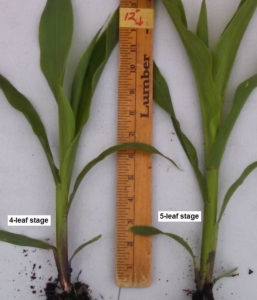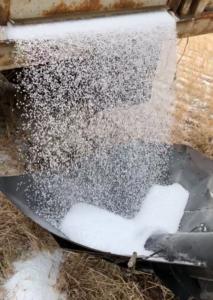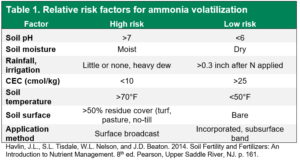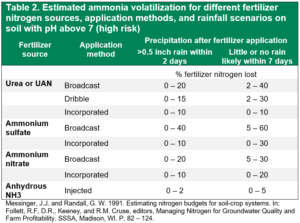Soil Sampling for Nitrogen in a Delayed Spring
Spring planting is clipping along in some parts of the region, while other parts are still waiting to hit the field, as excessive rainfall and cold temperatures have delayed spring field work and planting. Who would have thought last fall that this is what spring 2022 would look like, after the worst region-wide drought in 30 years? Mother Nature always reminds us to stay prepared for anything.
A delayed spring start means that every day in the field is important. AGVISE delivers next-day turnaround on processing soil samples. The soil samples are analyzed and reported the next business day after arrival at the laboratory. Soil test results are posted to our online AGVISOR portal for quick and easy access. If you need any soil sampling supplies for spring, please let us know and we will send them to you right away.
So, what is the best strategy for spring soil testing and assessing soil nitrogen losses after the rain? The compressed fertilizer and planting window might not leave enough time to adjust preplant fertilizer rates, especially if the field is just barely dry enough to plant. If soil nitrogen losses have occurred following spring rains, a spring soil test collected now will be helpful to create a split-applied nitrogen plan or to direct a supplemental nitrogen application later. In the AGVISE Spring 2022 Newsletter, we answered some questions on split-applied nitrogen application strategies, so please take a look at those options for applying nitrogen during the growing season.
Short-season crops develop quickly, so additional nitrogen should be applied in the upcoming weeks. A soil sample collected before or shortly after planting will provide the best assessment of preplant soil nitrogen supply and losses. Do not wait too long to collect the soil sample because, as we move into June, plant nitrogen uptake and nitrogen mineralization from soil organic matter will make the soil nitrogen result more difficult to decipher. To maximize yield in small grains, apply all topdress nitrogen before jointing (5-leaf stage). Any nitrogen applied after jointing will mostly go to grain protein. In canola, apply nitrogen during the rosette stage, before the 6-leaf stage.
Long-season crops like corn offer more flexibility and time for in-season soil sampling and nitrogen application. Rapid nitrogen uptake in corn does not begin until after the V6 growth stage. The Pre-sidedress Soil Nitrate Test (PSNT) can help you decide the appropriate sidedress nitrogen rate. For more details, take a look at the PSNT article link for instructions on collecting and submitting PSNT soil samples. The PSNT requires a 0-12 inch depth soil sample taken when corn plants are 6 to 12 inches tall (at the whorl), usually in late May or early June. Late-planted corn may not reach that height before mid-June, but PSNT soil samples should still be collected during the first two weeks of June. If spring rainfall was above normal, Iowa State University guidelines provide additional PSNT interpretation criteria for excessive rainfall, manured soils, and corn after alfalfa.
If you have any questions on the best strategies for spring soil sampling and in-season nitrogen application options, please call our technical support team and we will be happy to answer any questions you may have.




